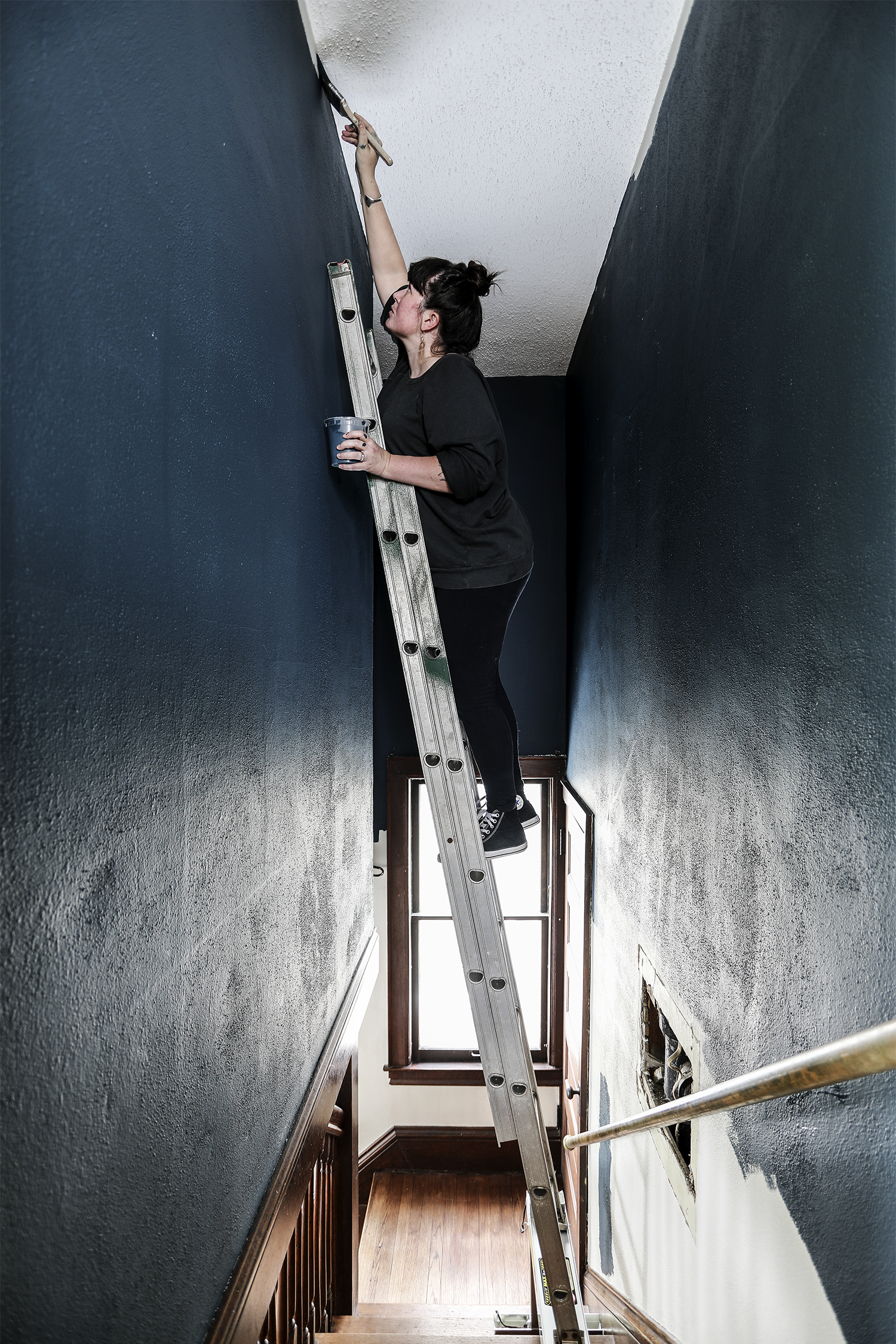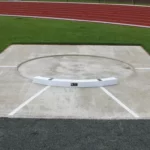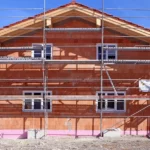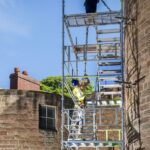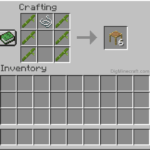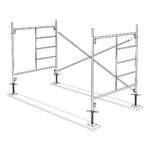Painting a high staircase can be tricky. You need safety and good results.
Are you looking to paint a high staircase in your home? It can seem like a daunting task. The height and angles make it challenging. But with the right tools and techniques, you can achieve a professional finish. This guide will help you understand the steps and precautions needed.
From choosing the right ladder to selecting the best paint, we cover it all. Your staircase will look refreshed and new. Don’t worry; you can do it. Let’s get started on transforming your high staircase today.

Credit: www.littlebitsofhome.com
Preparation Steps
Proper preparation is vital before painting a high staircase. This ensures a smooth process and a beautiful finish. Follow these preparation steps for the best results.
Gather Necessary Tools
First, gather all tools needed for the job. Here is a list:
- Paint and Primer: Choose the right type for your surface.
- Paint Brushes and Rollers: Different sizes for different areas.
- Drop Cloths: Protects the floor and furniture.
- Painter’s Tape: For clean edges and corners.
- Ladder or Scaffold: Ensure it reaches your highest point.
- Sandpaper: Smooth out rough spots.
- Cleaning Supplies: Rags, soap, and water to clean surfaces.
Ensure Safety Measures
Next, safety is crucial when painting a high staircase. Follow these safety tips:
- Wear Safety Gear: Gloves, goggles, and a mask.
- Stabilize Your Ladder: Ensure it is on a flat surface.
- Use a Scaffold: For higher and broader areas.
- Check Your Ladder: Make sure it is in good condition.
- Work in a Well-Ventilated Area: Keep windows open for fresh air.
- Take Breaks: Avoid fatigue by taking short breaks.
By following these preparation steps, you can paint your high staircase efficiently and safely. Remember, preparation is key to a successful painting project.
Choosing The Right Paint
Choosing the right paint is crucial for achieving a professional look when painting a high staircase. The type of paint you select and the color can significantly affect the final result. Below, we will explore different types of paint and offer tips on color selection to help you make an informed decision.
Types Of Paint
There are various types of paint to consider. Latex paint is a popular choice for its durability and ease of cleaning. It dries quickly and resists fading. Another option is oil-based paint. It provides a smooth finish and is highly durable. However, it takes longer to dry and requires more effort to clean up. Acrylic paint is also a good option. It offers vibrant colors and is suitable for many surfaces.
Color Selection Tips
Color selection is an important step in painting a high staircase. Light colors can make the space feel open and airy. Dark colors can add a dramatic effect but may make the space look smaller. Consider the existing decor and lighting conditions. Natural light can enhance the beauty of your chosen color. Use color swatches to see how different shades look in your space.
Setting Up The Work Area
Before you start painting a high staircase, it’s important to set up your work area properly. This will help you avoid accidents and ensure a neat job. Let’s break down the steps to get your workspace ready.
Covering Furniture And Floors
First, move any furniture away from the staircase. If you can’t move some pieces, cover them with plastic sheets. This will protect them from paint splatters.
Next, cover the floors around the staircase. Use drop cloths or old sheets. This will catch any drips and keep your floors clean.
Setting Up Scaffolding Or Ladders
Choose the right equipment for reaching high spots. Scaffolding provides a stable platform. It’s a good choice for large areas. Set it up according to the manufacturer’s instructions.
If you use a ladder, make sure it’s tall enough. Place it on a stable, flat surface. Always follow safety guidelines to prevent falls.

Credit: aturtleslifeforme.com
Priming The Surface
Before painting, ensure the surface is ready. Priming is essential. It provides a smooth base and ensures the paint adheres well. Proper priming can make your job easier and give a professional finish.
Importance Of Primer
Primer is vital. It seals the surface and covers stains. This helps in achieving an even color. It also increases the durability of your paint job. Primer is especially important for high staircases. These areas see a lot of wear and tear.
| Benefit | Description |
|---|---|
| Seals Surface | Prevents stains and imperfections from showing. |
| Even Base | Ensures smooth paint application. |
| Durability | Extends the life of your paint job. |
Applying Primer Efficiently
To apply primer, follow these steps:
- Clean the Surface: Remove dust and debris. Use a damp cloth.
- Use Painter’s Tape: Protect edges and fixtures. Apply tape along borders.
- Choose the Right Tools: Use a roller for large areas. A brush for corners.
- Apply Evenly: Start at the top. Work your way down.
- Allow to Dry: Wait for the primer to dry completely. This usually takes a few hours.
Proper priming saves time and ensures a quality finish. Remember to wear safety gear. Use a sturdy ladder. Safety first!
Painting Techniques
Painting a high staircase can be a daunting task. Using the right techniques makes it easier and safer. This section will cover different methods to apply paint effectively. We’ll discuss the use of brushes, rollers, and extension poles.
Brush Vs. Roller
Brushes are great for cutting in edges and corners. They offer precision and control. Brushes work well for detailed areas and trim. For larger surfaces, a roller is more efficient. Rollers cover more area quickly. They provide a smooth finish on walls and ceilings. Choose a roller with an appropriate nap for your surface. A high-nap roller is ideal for textured walls. A low-nap roller suits smooth surfaces.
Using Extension Poles
Extension poles are essential for painting high areas. They help you reach without a ladder. This reduces the risk of falls and injuries. Attach the roller to the extension pole securely. Check that it fits snugly. Begin painting from the top and work your way down. Use a consistent pressure for an even coat. Extension poles save time and effort. They allow you to cover high areas with ease.
Dealing With Corners And Edges
Painting a high staircase presents unique challenges. Corners and edges can be tricky. A clean finish demands patience and the right techniques. Here, we will focus on taping techniques and using angled brushes.
Taping Techniques
Good taping techniques prevent paint bleed. Use painter’s tape for best results. Press the tape firmly along edges and corners. This creates a seal. Remove the tape slowly after painting. This prevents peeling.
Using Angled Brushes
Angled brushes are perfect for corners and edges. They provide control and precision. Dip the brush lightly into the paint. Use short, even strokes. Paint from the corner outwards. This ensures a smooth finish.
Drying And Second Coat
Drying and applying a second coat are crucial steps when painting a high staircase. Proper drying ensures the paint sets well, leading to a smooth finish. A second coat enhances color depth and coverage. This section will guide you through the drying time and applying the second coat.
Drying Time
After painting the first coat, allow the paint to dry completely. This usually takes around 4-6 hours. Use a fan to speed up the drying process. Make sure the area is well-ventilated. Check the paint can for specific drying times. Different paints have different drying times. Oil-based paints take longer to dry. Water-based paints dry faster. Patience is key during this step.
Applying The Second Coat
Once the first coat is fully dry, it’s time for the second coat. Use a clean brush or roller. Start from the top of the staircase. Work your way down. Apply the paint in thin, even layers. Avoid overloading the brush or roller. This prevents drips and uneven coverage. Take your time to cover all areas. Ensure the second coat is smooth and even.
Let the second coat dry completely. Follow the same drying steps as before. Check for any missed spots. Touch up if needed. Your high staircase should now have a fresh, vibrant look.
Cleanup Process
Cleaning up after painting a high staircase is crucial. It ensures your tools stay in good condition and your space remains tidy. This section will guide you through the essential cleanup steps.
Cleaning Brushes And Rollers
Wash your brushes and rollers with warm water and mild soap. Rinse them thoroughly to remove all paint residue. Squeeze excess water out of the brushes and rollers. Lay them flat to dry to maintain their shape.
Removing Protective Coverings
Carefully peel off any protective coverings like painter’s tape or plastic sheets. Start from the edges to avoid tearing. Dispose of these materials properly. Check for any paint spills on the floor or furniture. Wipe them clean before they dry and harden.

Credit: www.wikihow.com
Frequently Asked Questions
What Tools Do I Need To Paint A High Staircase?
To paint a high staircase, you need a ladder, extension pole, roller, paintbrush, and safety gear. These tools ensure you can reach high areas and paint efficiently.
How Do I Prepare A High Staircase For Painting?
Clean the staircase, sand any rough areas, and apply painter’s tape to protect edges. Proper preparation ensures a smooth and professional finish.
What Type Of Paint Is Best For Staircases?
Use durable, high-quality paint that can withstand heavy foot traffic. Semi-gloss or satin finishes are ideal as they are easy to clean and maintain.
How Do I Ensure Safety When Painting A High Staircase?
Use a stable ladder, wear non-slip shoes, and have a spotter if possible. Safety is crucial when working at heights.
Conclusion
Painting a high staircase can seem daunting. But with the right tools, it’s manageable. Start with proper preparation to ensure safety. Use ladders or scaffoldings correctly. Choose quality paint for a lasting finish. Take breaks to avoid fatigue. Following these steps makes the task easier and safer.
Enjoy your beautifully painted staircase. You did it! Now, your home looks refreshed. Thank you for reading. Happy painting!
